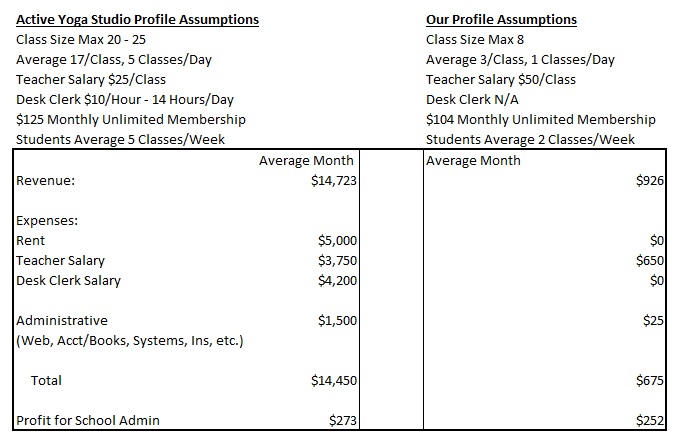The Business of Yoga

While yoga students unwittingly enjoyed yoga studios all over Westchester offering 6 classes per day at low prices, ominous signs from the financial statements of companies like Yogaworks as early as 2017 foretold looming bankruptcies. With demand split between virtual and in-person yoga, rebuilding that environment is even less possible today. This article explains why and what happens next.
What We Learned
Prior to the Covid economic shock, I had written a couple of articles highlighting the fragility of the yoga business models (capital raising models or venture capital as in Yogaworks) prevalent at the time. They were designed to spread yoga rapidly, but would have serious difficulty sustaining an economic shock as small as a 10% reduction in revenues. People well versed in yoga practice are often not well versed in business practices. Prior to Covid, their business models needed a continuous flow of outside capital to prop up their business. But the normal expectation of the people who provide such funding is substantial profit opportunity, which genuine yoga training is unlikely to ever provide. The numbers for people who want to practice genuine yoga just aren't there. For people just looking for exercise, a studio with a single line of business (yoga for exercise) would have to charge too much to compete with the gyms who have diversified forms of exercise.
In short, yoga studios with a dedicated space cannot be funded by businesses looking to make money or individuals without deep pockets to sustain periods of losses with no expectations of recovering them with future earnings.
Below is an example of the income statement from a theoretically successful yoga business as compared to something more similar to our business model pre-Covid:

You can see a 10% reduction in revenue calls into question the active yoga studio, but is inconsequential to us. The bottom line for the active studio profit for admin is -$1,200/month, whereas ours would be +$160/month. The active studio might respond to this imbalance by upselling yoga teacher trainings at high cost. This approach has the long run effect of lowering the quality of instruction as the market is flooded with new teachers who have little to do with their teaching certificates.
From these facts and figures, we can clearly see that the business models employed before the Covid economic shock were not designed to last over the long run. The economic shock merely made this fact apparent more quickly. Today, with the volume of students participating in person greatly reduced, the ability to establish a dedicated studio space for yoga practice is less sustainable than before.
What We Are Doing Now
Our business model was never intended to maximize revenues, but instead minimize costs. The method is called a "bootstrap approach." We chose a nonprofit for two reasons - first we are genuinely mission driven, and since we do not pursue profits the structure is most efficient for lowering costs. We offer space that is used exclusively for contemplative disciplines with a similar purpose to yoga. Through small classes or private lessons, as a collective we help connect the same teachers as in previous years to students for classes. The student may take fewer classes than the typical studio, but they can leverage their yoga into much larger benefits through a regular home practice. The space is funded mainly by other programs that have proven more stable than yoga. As we are a nonprofit driven by the same mission, this structure has enabled us to weather the business cycles in a sustainable manner.
Future of the Industry
The old business models - capital raising - were really capital losing approaches. You burn cash to take market share quickly, hoping to profit in later years by flexing your marketing muscle. But there never was any pot of gold at the end of the rainbow, so their initial losses were never really recovered. From today, it is clear a bootstrap approach will be needed to re-establish the practice in person in a sustainable manner. Growth will be slower with smaller class schedules. The problem will be in future years when people forget the lessons of the past and the capital raising business strategies return. Since the yoga efforts emerging will work on fine margins, this competition will pressure their efforts and those new entrants will ultimately fail in large numbers after impacting industry landscape negatively. Developing yoga in this type of environment is challenging. The best way to form a solid industry foundation is for knowledgeable consumers to focus their practice with skillful teachers, who primarily focus their efforts with well intentioned studio owners that grow a stable business without predatory impacts on other studios.
